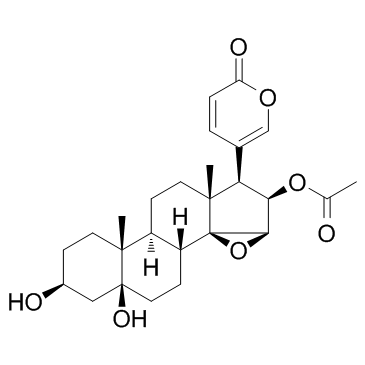Chemical defense of an Asian snake reflects local availability of toxic prey and hatchling diet.
Hutchinson DA, Savitzky AH, Burghardt GM, Nguyen C, Meinwald J, Schroeder FC, Mori A
文献索引:J. Zool. (Lond.) 289 , 270-278, (2013)
全文:HTML全文
摘要
Species that sequester toxins from prey for their own defense against predators may exhibit population-level variation in their chemical arsenal that reflects the availability of chemically defended prey in their habitat. Rhabdophis tigrinus is an Asian snake that possesses defensive glands in the skin of its neck ('nuchal glands'), which typically contain toxic bufadienolide steroids that the snakes sequester from consumed toads. In this study, we compared the chemistry of the nuchal gland fluid of R. tigrinus from toad-rich and toad-free islands in Japan and determined the effect of diet on the nuchal gland constituents. Our findings demonstrate that captive-hatched juveniles from toad-rich Ishima Island that had not been fed toads possess defensive bufadienolides in their nuchal glands, presumably due to maternal provisioning of these sequestered compounds. Wild-caught juveniles from Ishima possess large quantities of bufadienolides, which could result from a combination of maternal provisioning and sequestration of these defensive compounds from consumed toads. Interestingly, juvenile females from Ishima possess larger quantities of bufadienolides than do juvenile males, whereas a small sample of field-collected snakes suggests that adult males contain larger quantities of bufadienolides than do adult females. Captive-born hatchlings from Kinkasan Island lack bufadienolides in their nuchal glands, reflecting the absence of toads on that island, but they can sequester bufadienolides by feeding on toads (Bufo japonicus) in captivity. The presence of large quantities of bufadienolides in the nuchal glands of R. tigrinus from Ishima may reduce the risk of predation by providing an effective chemical defense, whereas snakes on Kinkasan may experience increased predation due to the lack of defensive compounds in their nuchal glands.
相关化合物
| 结构式 | 名称/CAS号 | 分子式 | 全部文献 |
|---|---|---|---|
 |
华蟾毒它灵
CAS:1108-68-5 |
C26H34O7 |
|
Pre-clinical evaluation of cinobufotalin as a potential anti...
2014-09-26 [Biochem. Biophys. Res. Commun. 452(3) , 768-74, (2014)] |
|
Ceramide production mediates cinobufotalin-induced growth in...
2015-08-01 [Tumour Biol. 36 , 5763-71, (2015)] |
|
Comparative Analysis of the Bufonis Venenum by Using TLC, HP...
2012-12-01 [J Pharmacopuncture 15 , 52-65, (2015)] |
|
[Inhibitory effects of co-cinobufotalin oral liquor on hepat...
1996-12-01 [Zhongguo Zhong Xi Yi Jie He Za Zhi 16(12) , 738-40, (1996)] |
|
[Clinical study on cinobufotalin in treating chronic hepatit...
1993-08-01 [Zhongguo Zhong Xi Yi Jie He Za Zhi 13(8) , 473-5, 453-4, (1993)] |